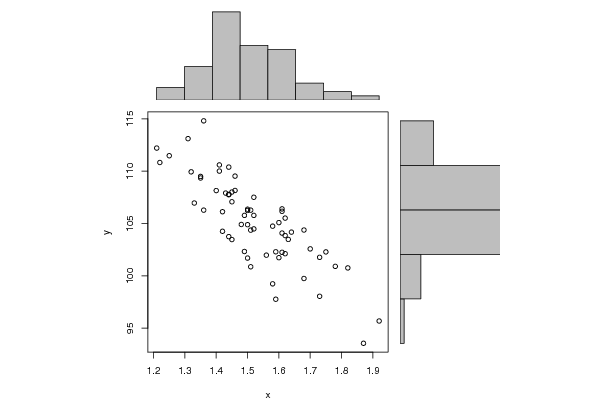Free Statistics
of Irreproducible Research!
Description of Statistical Computation | |||||||||||||||||||||||||||||||||||||||||||||||||||||||||||||||||||||||||||||||||||||||||||||||||||
|---|---|---|---|---|---|---|---|---|---|---|---|---|---|---|---|---|---|---|---|---|---|---|---|---|---|---|---|---|---|---|---|---|---|---|---|---|---|---|---|---|---|---|---|---|---|---|---|---|---|---|---|---|---|---|---|---|---|---|---|---|---|---|---|---|---|---|---|---|---|---|---|---|---|---|---|---|---|---|---|---|---|---|---|---|---|---|---|---|---|---|---|---|---|---|---|---|---|---|---|
| Author's title | |||||||||||||||||||||||||||||||||||||||||||||||||||||||||||||||||||||||||||||||||||||||||||||||||||
| Author | *The author of this computation has been verified* | ||||||||||||||||||||||||||||||||||||||||||||||||||||||||||||||||||||||||||||||||||||||||||||||||||
| R Software Module | rwasp_correlation.wasp | ||||||||||||||||||||||||||||||||||||||||||||||||||||||||||||||||||||||||||||||||||||||||||||||||||
| Title produced by software | Pearson Correlation | ||||||||||||||||||||||||||||||||||||||||||||||||||||||||||||||||||||||||||||||||||||||||||||||||||
| Date of computation | Sat, 18 Oct 2008 07:41:34 -0600 | ||||||||||||||||||||||||||||||||||||||||||||||||||||||||||||||||||||||||||||||||||||||||||||||||||
| Cite this page as follows | Statistical Computations at FreeStatistics.org, Office for Research Development and Education, URL https://freestatistics.org/blog/index.php?v=date/2008/Oct/18/t1224337378st5z2lmx5yl9wba.htm/, Retrieved Sun, 19 May 2024 16:34:02 +0000 | ||||||||||||||||||||||||||||||||||||||||||||||||||||||||||||||||||||||||||||||||||||||||||||||||||
| Statistical Computations at FreeStatistics.org, Office for Research Development and Education, URL https://freestatistics.org/blog/index.php?pk=16626, Retrieved Sun, 19 May 2024 16:34:02 +0000 | |||||||||||||||||||||||||||||||||||||||||||||||||||||||||||||||||||||||||||||||||||||||||||||||||||
| QR Codes: | |||||||||||||||||||||||||||||||||||||||||||||||||||||||||||||||||||||||||||||||||||||||||||||||||||
|
| |||||||||||||||||||||||||||||||||||||||||||||||||||||||||||||||||||||||||||||||||||||||||||||||||||
| Original text written by user: | |||||||||||||||||||||||||||||||||||||||||||||||||||||||||||||||||||||||||||||||||||||||||||||||||||
| IsPrivate? | No (this computation is public) | ||||||||||||||||||||||||||||||||||||||||||||||||||||||||||||||||||||||||||||||||||||||||||||||||||
| User-defined keywords | |||||||||||||||||||||||||||||||||||||||||||||||||||||||||||||||||||||||||||||||||||||||||||||||||||
| Estimated Impact | 121 | ||||||||||||||||||||||||||||||||||||||||||||||||||||||||||||||||||||||||||||||||||||||||||||||||||
Tree of Dependent Computations | |||||||||||||||||||||||||||||||||||||||||||||||||||||||||||||||||||||||||||||||||||||||||||||||||||
| Family? (F = Feedback message, R = changed R code, M = changed R Module, P = changed Parameters, D = changed Data) | |||||||||||||||||||||||||||||||||||||||||||||||||||||||||||||||||||||||||||||||||||||||||||||||||||
| F [Univariate Data Series] [Eerste tijdreeks] [2008-10-11 15:49:53] [c45c87b96bbf32ffc2144fc37d767b2e] - PD [Univariate Data Series] [aantal begonnen w...] [2008-10-18 13:04:32] [c45c87b96bbf32ffc2144fc37d767b2e] F RMPD [Pearson Correlation] [relatie tijdreeks...] [2008-10-18 13:27:30] [c45c87b96bbf32ffc2144fc37d767b2e] F D [Pearson Correlation] [relatie tijdreeks...] [2008-10-18 13:31:33] [c45c87b96bbf32ffc2144fc37d767b2e] F D [Pearson Correlation] [relatie tijdreeks...] [2008-10-18 13:35:31] [c45c87b96bbf32ffc2144fc37d767b2e] F D [Pearson Correlation] [relatie tijdreeks...] [2008-10-18 13:37:37] [c45c87b96bbf32ffc2144fc37d767b2e] F D [Pearson Correlation] [relatie tijdreeks...] [2008-10-18 13:39:20] [c45c87b96bbf32ffc2144fc37d767b2e] F D [Pearson Correlation] [relatie tijdreeks...] [2008-10-18 13:41:34] [3dc594a6c62226e1e98766c4d385bfaa] [Current] | |||||||||||||||||||||||||||||||||||||||||||||||||||||||||||||||||||||||||||||||||||||||||||||||||||
| Feedback Forum | |||||||||||||||||||||||||||||||||||||||||||||||||||||||||||||||||||||||||||||||||||||||||||||||||||
Post a new message | |||||||||||||||||||||||||||||||||||||||||||||||||||||||||||||||||||||||||||||||||||||||||||||||||||
Dataset | |||||||||||||||||||||||||||||||||||||||||||||||||||||||||||||||||||||||||||||||||||||||||||||||||||
| Dataseries X: | |||||||||||||||||||||||||||||||||||||||||||||||||||||||||||||||||||||||||||||||||||||||||||||||||||
1.61 1.25 1.21 1.42 1.22 1.42 1.44 1.44 1.48 1.49 1.59 1.33 1.51 1.36 1.45 1.44 1.32 1.40 1.35 1.50 1.52 1.45 1.45 1.59 1.49 1.35 1.70 1.52 1.36 1.44 1.56 1.61 1.73 1.58 1.50 1.51 1.73 1.52 1.60 1.41 1.46 1.58 1.41 1.61 1.31 1.62 1.51 1.60 1.61 1.63 1.46 1.87 1.92 1.62 1.50 1.43 1.64 1.62 1.68 1.82 1.68 1.50 1.75 1.78 | |||||||||||||||||||||||||||||||||||||||||||||||||||||||||||||||||||||||||||||||||||||||||||||||||||
| Dataseries Y: | |||||||||||||||||||||||||||||||||||||||||||||||||||||||||||||||||||||||||||||||||||||||||||||||||||
106.40 111.48 112.21 106.13 110.83 104.26 107.79 110.39 104.91 105.78 97.77 106.96 100.87 106.28 103.47 103.75 109.94 108.15 109.35 106.25 105.78 108.01 107.08 102.30 102.33 109.50 102.58 107.51 114.81 107.75 101.98 106.17 101.77 99.24 101.70 104.37 98.05 104.49 101.74 110.01 108.16 104.75 110.60 104.09 113.11 105.52 106.28 105.09 102.25 103.48 109.53 93.56 95.69 103.85 106.37 107.91 104.18 102.12 99.75 100.76 104.38 104.89 102.29 100.91 | |||||||||||||||||||||||||||||||||||||||||||||||||||||||||||||||||||||||||||||||||||||||||||||||||||
Tables (Output of Computation) | |||||||||||||||||||||||||||||||||||||||||||||||||||||||||||||||||||||||||||||||||||||||||||||||||||
| |||||||||||||||||||||||||||||||||||||||||||||||||||||||||||||||||||||||||||||||||||||||||||||||||||
Figures (Output of Computation) | |||||||||||||||||||||||||||||||||||||||||||||||||||||||||||||||||||||||||||||||||||||||||||||||||||
Input Parameters & R Code | |||||||||||||||||||||||||||||||||||||||||||||||||||||||||||||||||||||||||||||||||||||||||||||||||||
| Parameters (Session): | |||||||||||||||||||||||||||||||||||||||||||||||||||||||||||||||||||||||||||||||||||||||||||||||||||
| Parameters (R input): | |||||||||||||||||||||||||||||||||||||||||||||||||||||||||||||||||||||||||||||||||||||||||||||||||||
| R code (references can be found in the software module): | |||||||||||||||||||||||||||||||||||||||||||||||||||||||||||||||||||||||||||||||||||||||||||||||||||
bitmap(file='test1.png') | |||||||||||||||||||||||||||||||||||||||||||||||||||||||||||||||||||||||||||||||||||||||||||||||||||





